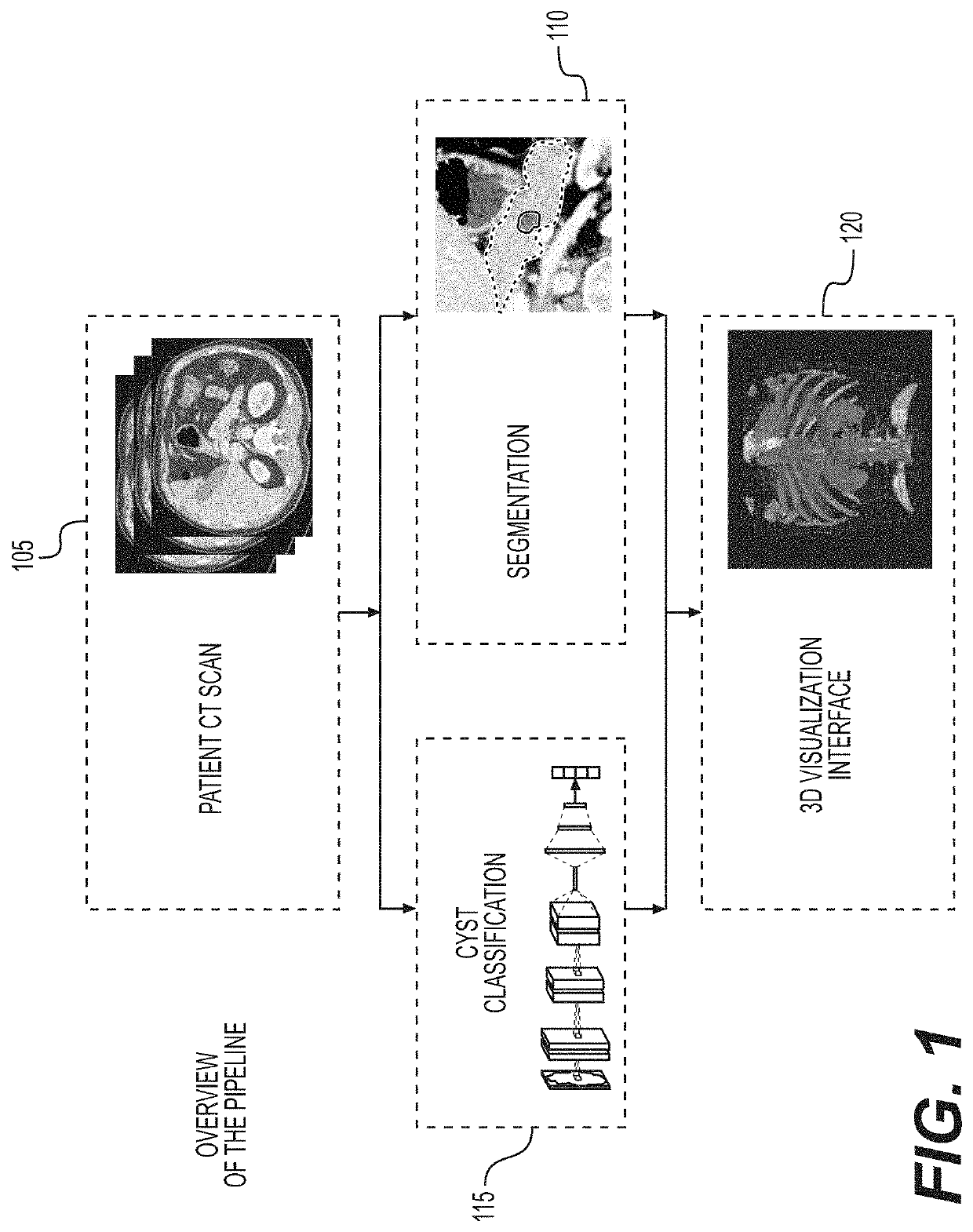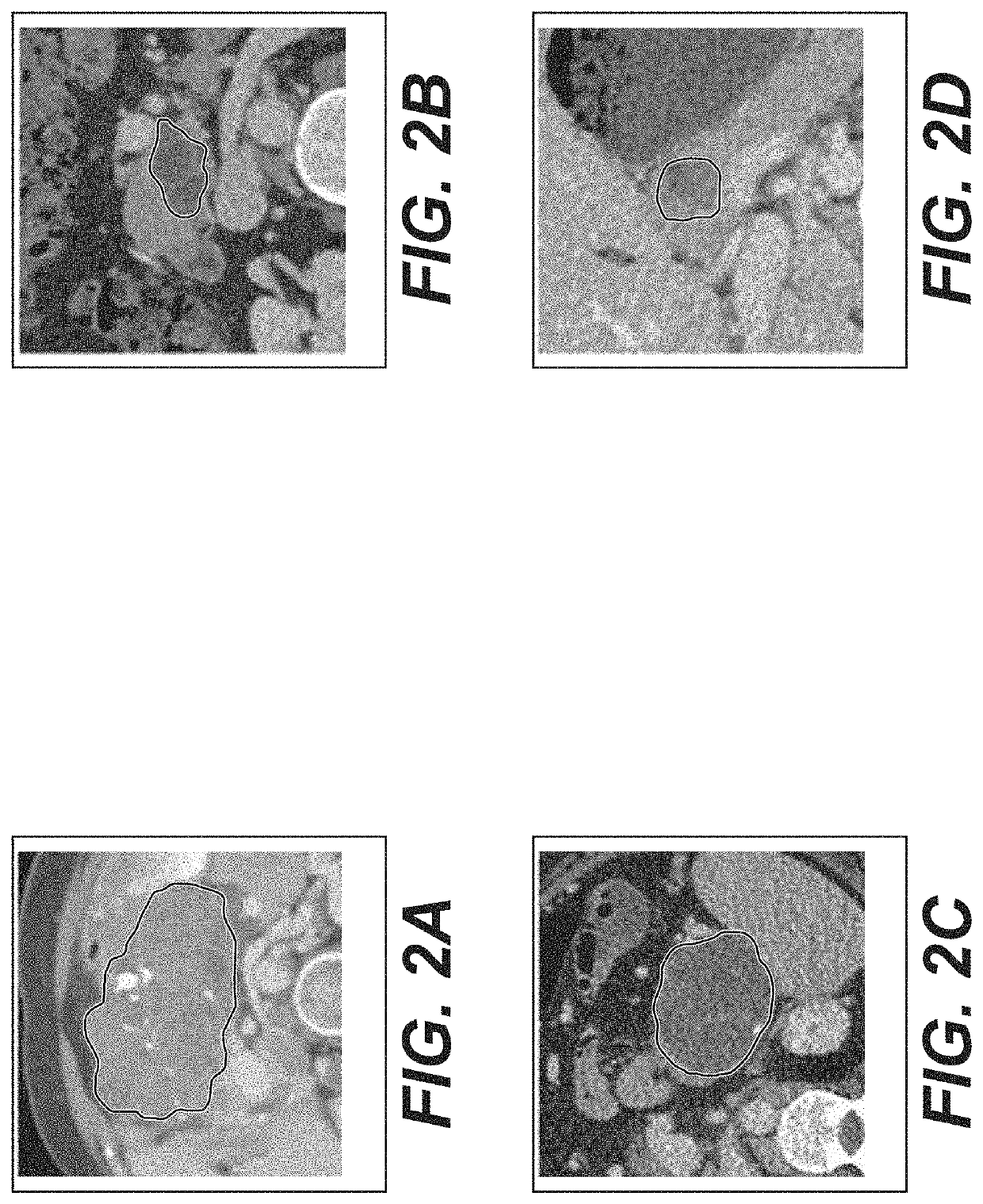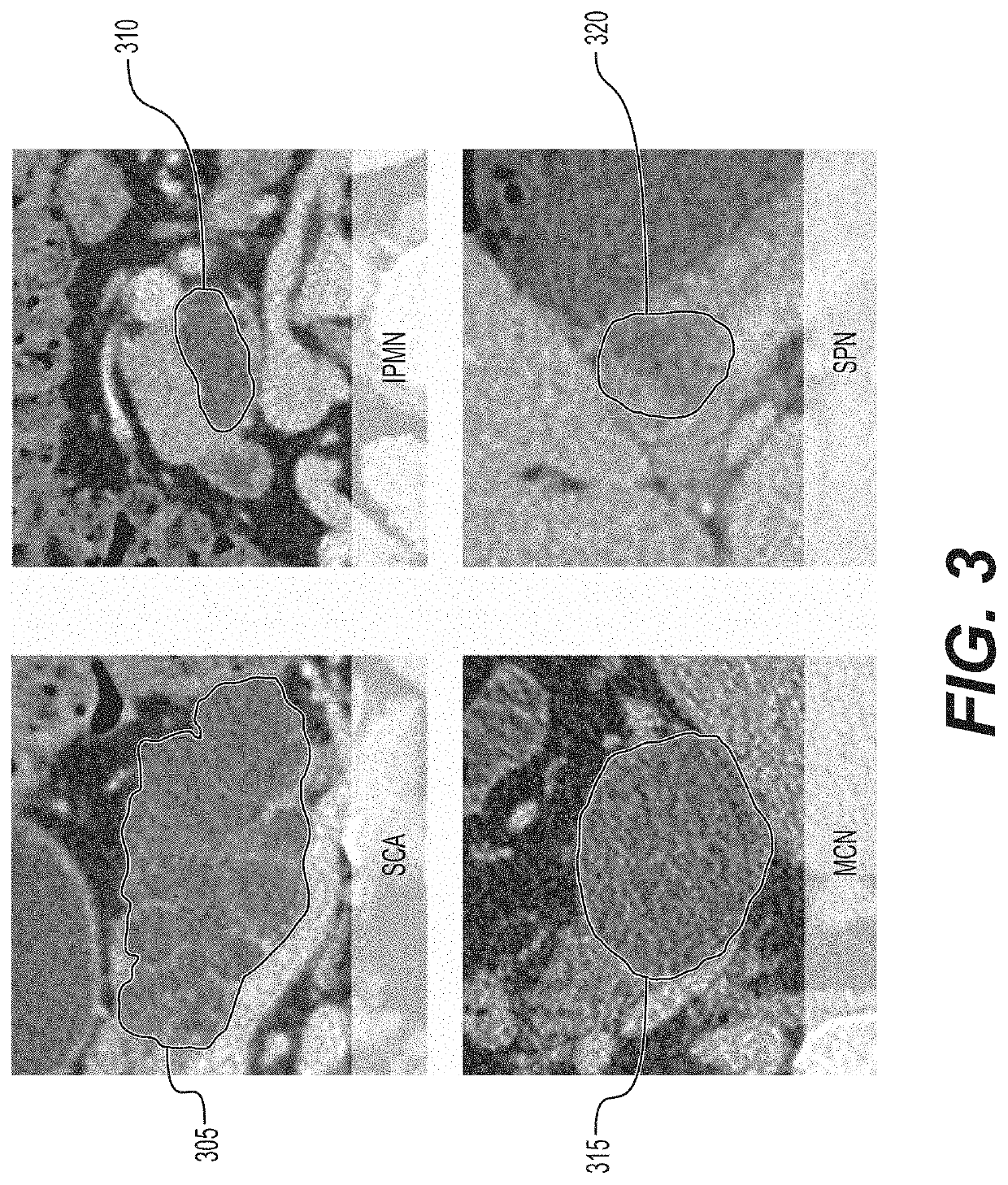System, method, and computer-accessible medium for virtual pancreatography
a virtual pancreatography and computer-accessible technology, applied in the field of medical imaging, can solve problems such as difficulty in correctly identifying the type of cystic lesion by manual examination of the radiological image and no cad procedures for classifying the type of pancreatic cystic lesion
- Summary
- Abstract
- Description
- Claims
- Application Information
AI Technical Summary
Benefits of technology
Problems solved by technology
Method used
Image
Examples
Embodiment Construction
[0009]A system, method, and computer-accessible medium for using medical imaging data to screen for a cyst(s) (e.g., for segmentation and visualization of a cystic lesion) can include, for example, receiving first imaging information for an organ(s) of a one patient(s), generating second imaging information by performing a segmentation operation on the first imaging information to identify a plurality of tissue types, including a tissue type(s) indicative of the cyst(s), identifying the cyst(s) in the second imaging information, and applying a first classifier and a second classifier to the cyst(s) to classify the cyst(s) into one or more of a plurality of cystic lesion types. The first classifier can be a Random Forest classifier and the second classifier can be a convolutional neural network classifier. The convolutional neural network can include at least 6 convolutional layers, where the at least 6 convolutional layers can include a max-pooling layer(s), a dropout layer(s), and ...
PUM
 Login to View More
Login to View More Abstract
Description
Claims
Application Information
 Login to View More
Login to View More - R&D
- Intellectual Property
- Life Sciences
- Materials
- Tech Scout
- Unparalleled Data Quality
- Higher Quality Content
- 60% Fewer Hallucinations
Browse by: Latest US Patents, China's latest patents, Technical Efficacy Thesaurus, Application Domain, Technology Topic, Popular Technical Reports.
© 2025 PatSnap. All rights reserved.Legal|Privacy policy|Modern Slavery Act Transparency Statement|Sitemap|About US| Contact US: help@patsnap.com



